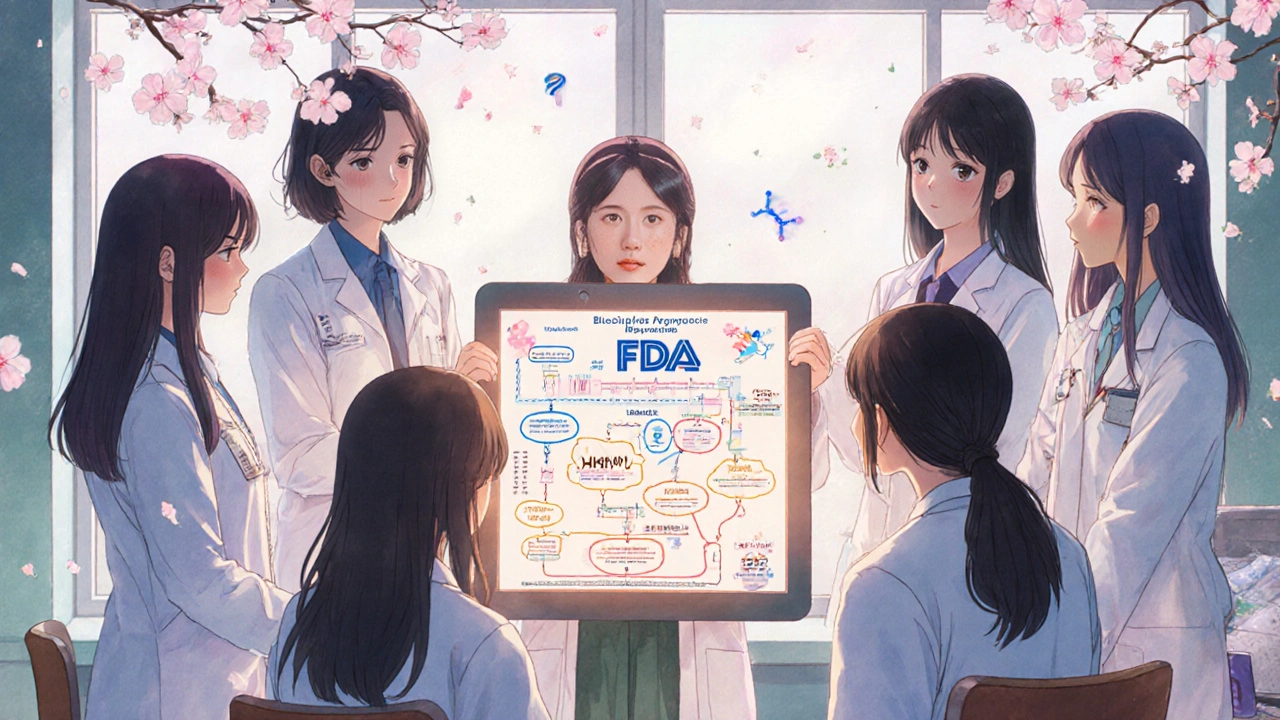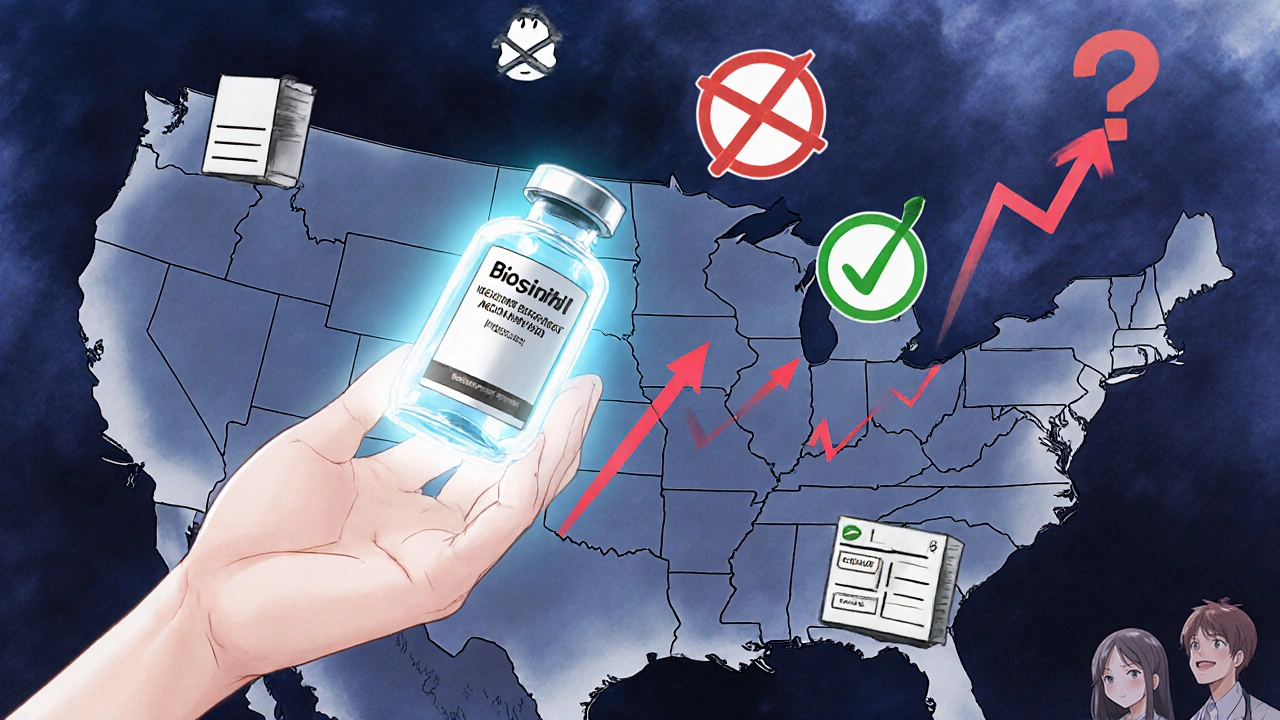When a doctor prescribes a biologic for rheumatoid arthritis, Crohn’s disease, or cancer, they’re using a complex medicine made from living cells-something far more intricate than a simple pill. These drugs have changed lives, but they’re also incredibly expensive. Enter biosimilars: drugs designed to be nearly identical to these high-cost biologics, but at a fraction of the price. Yet, despite being approved by the FDA and proven safe in clinical trials, many providers still hesitate to use them. Why? Because they don’t fully understand how biosimilars are different-from both the original biologics and from generic drugs.
What Exactly Is a Biosimilar?
A biosimilar is not a copy. It’s not a generic. It’s a highly similar version of a biologic drug that has already been approved. The FDA requires biosimilars to show no clinically meaningful differences in safety, purity, or potency compared to the original product. That means patients should get the same results. But getting there isn’t simple.
Biologics are made from living organisms-cells, proteins, antibodies. Even tiny changes in how they’re made can affect how they work. That’s why biosimilars need more than just a chemical test to prove they’re the same. They require dozens of analytical studies, animal testing, and at least one clinical trial showing they work the same way in humans. Generics? They just need to prove they’re absorbed the same way in the body. That’s it.
Think of it this way: a generic aspirin is chemically identical to the brand-name version. A biosimilar insulin? It’s like building a new engine that runs exactly like the original-but made with different parts, in a different factory, by a different team. The output is the same. The process? Not even close.
Biosimilars vs Generics: The Big Differences
Most people assume all cheaper versions of expensive drugs are the same. They’re not. Here’s how biosimilars and generics really differ:
- Complexity: Generics are small-molecule drugs with simple chemical structures. Biosimilars are large, complex proteins made from living cells.
- Testing: Generics require bioequivalence studies. Biosimilars need analytical, non-clinical, and clinical studies-often 10 to 20 times more data.
- Manufacturing: A generic can be made the same way every time. A biosimilar’s production process is so sensitive that even changing a single step can alter the final product.
- Interchangeability: Only a few biosimilars have been designated as interchangeable by the FDA. That means a pharmacist can substitute them for the brand without asking the doctor. No generic has this extra layer-it’s automatic.
And here’s the kicker: 63% of U.S. physicians in a 2016 survey couldn’t correctly identify this difference. That’s not just a knowledge gap-it’s a barrier to patient access.
Why Providers Are Still Hesitant
Even after a decade of biosimilars on the market, hesitation is common. Why?
One major reason is extrapolation. A biosimilar might be tested in just one condition-say, rheumatoid arthritis-but approved for five others because the science shows the mechanism of action is the same. For example, a biosimilar approved for Crohn’s disease might have only been tested in psoriasis. Providers worry: is it really safe for Crohn’s? The FDA says yes, if the data supports it. But many clinicians still feel uneasy.
Then there’s immunogenicity. Even small structural differences can cause the body to react. While biosimilars must show no increased risk compared to the original, the fear remains. A 2022 survey found 57% of providers were concerned about using biosimilars for indications not directly studied in trials.
And don’t forget the paperwork. About 78% of U.S. hospitals report trouble tracking biosimilars in their electronic health records. Epic and other systems often don’t distinguish between a reference product and its biosimilar. So if a patient switches, there’s no clear record. That’s dangerous if something goes wrong.

Who’s Using Biosimilars-and Who Isn’t
Adoption isn’t equal across specialties. Rheumatologists lead the way, with 68% using biosimilars regularly. Oncologists are close behind at 52%. But endocrinologists? Only 29%. That’s even though insulin biosimilars have been available since 2015.
Why the gap? It’s not about access. It’s about education. In a 2017 study, oncology staff who went through 12 training sessions over four months went from 40.1% confidence in biosimilars to 92%. That’s not a small jump-it’s a revolution.
Pharmacists are also key. Hospital pharmacists know more about biosimilars than community pharmacists-by 27%. They’re often the ones educating doctors and nurses. In fact, 76% of U.S. hospitals now rely on pharmacists to lead biosimilar training.
What Providers Need to Know
If you’re prescribing, dispensing, or administering biologics, here’s what you must understand:
- They’re not generics. Don’t assume they work the same way. The testing is deeper, the science is different.
- Extrapolation is real. If a biosimilar works for one condition, it can be approved for others-but only if the science supports it. Don’t guess. Check the FDA label.
- Interchangeability ≠ biosimilarity. Only a handful of biosimilars are interchangeable. In most cases, the prescriber must specifically order the biosimilar.
- Immunogenicity risk is low-but real. Monitor patients. Document everything. If a patient has a reaction, it’s critical to know exactly which product they received.
- EHRs are broken. If your system doesn’t track biosimilars separately, push for a fix. Manual entry isn’t sustainable.
The FDA has 37 free educational resources available in nine languages, including French, Korean, and Vietnamese. These include modules on pharmacokinetics, billing, and real-world evidence. Use them.

How to Get Educated-Fast
You don’t need a PhD to understand biosimilars. But you do need focused learning. Here’s how to get up to speed in under two weeks:
- Start with the FDA’s Teaching Resource Guide. It’s free, peer-reviewed, and updated annually. Focus on modules 3 (Regulatory Pathway) and 7 (Clinical Evidence).
- Watch the Arthritis Foundation’s 15-minute provider video on biosimilar switching. It’s short, clear, and practical.
- Ask your hospital pharmacist for a 30-minute walkthrough of your EHR system’s biosimilar tracking process.
- Review the prescribing information for one biosimilar you use. Compare it side-by-side with the reference product. Look for differences in inactive ingredients, storage requirements, and dosing.
At the University of Pittsburgh Medical Center, they used a three-phase approach: foundational knowledge (4 weeks), specialty-specific application (6 weeks), and ongoing support. Within six months, provider confidence jumped to 89%.
The Bottom Line
Biosimilars are saving patients and healthcare systems billions. The Congressional Budget Office estimates $150 billion in savings over the next decade. But none of that matters if providers don’t use them.
The gap isn’t about science. It’s about education. Providers who understand biosimilars are more confident. Their patients get better access. Costs go down. Outcomes stay the same.
If you’re unsure about a biosimilar, don’t guess. Don’t wait for someone else to fix it. Go to the FDA’s website. Talk to your pharmacist. Ask a colleague who’s already using them. Start small. Pick one drug. Learn it. Then teach someone else.
Because when you understand biosimilar differences, you’re not just prescribing a drug-you’re changing how care is delivered.
Are biosimilars the same as generics?
No. Generics are chemically identical copies of small-molecule drugs and only require bioequivalence testing. Biosimilars are complex proteins made from living cells and must undergo extensive analytical, non-clinical, and clinical testing to prove they’re highly similar to the original biologic-with no clinically meaningful differences in safety or effectiveness.
Can biosimilars be automatically substituted like generics?
Only if they’re designated as "interchangeable" by the FDA. Very few biosimilars have this status. Even then, substitution rules vary by state. In 42 U.S. states, pharmacists can substitute a biosimilar only if the prescriber hasn’t prohibited it and if the patient is notified. Always check your state’s laws and the product label.
Why are some doctors reluctant to prescribe biosimilars?
Common concerns include fear of immunogenicity, uncertainty about extrapolation (using a biosimilar for conditions not directly studied in trials), and confusion over EHR documentation. Many providers also lack formal training. Studies show that after education, provider confidence in biosimilars jumps from around 40% to over 90%.
Which specialties use biosimilars the most?
Rheumatologists lead with 68% usage, followed by oncologists at 52%. Endocrinologists lag behind at 29%, even though insulin biosimilars have been available since 2015. The gap reflects differences in education, comfort with complex therapies, and institutional support.
How much money do biosimilars save?
Biosimilars typically cost 15% to 30% less than their reference biologics. In Medicare Part B, biosimilars had 28% lower average sales prices in 2022. The Congressional Budget Office estimates biosimilars could save the U.S. healthcare system $150 billion over the next decade.
What’s the biggest barrier to biosimilar adoption?
The biggest barrier is provider education. Surveys show only 38% of U.S. physicians feel "extremely familiar" with the FDA’s definition of biosimilarity. Other barriers include EHR system limitations, patient concerns, and lack of real-world data-though education programs have proven to dramatically increase confidence and use.

